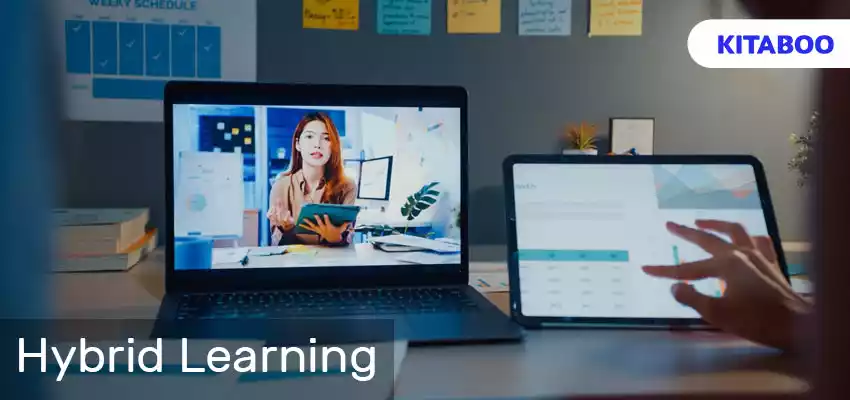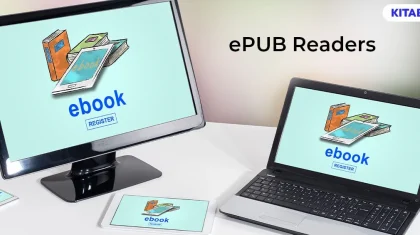
What is Hybrid Learning? Benefits, Importance, and More
Summarize this blog with your favorite AI:
Today’s learning ecosystems combine the best from multiple modes of teaching to create and deliver a holistic learning experience. Tools to enhance the classroom environment, such as web-based applications, digital content, images, and videos, have been around for over a decade. However, in recent years, hybrid learning techniques have gained more prominence.
With a global thrust towards transforming the educational landscape into a more interactive, holistic, and stimulating experience, hybrid learning is leading this change. Here is all you need to know about hybrid learning.
Table of Contents
II. How is it Different from Blended and Online Learning?
III. What are the Benefits of Hybrid Learning?
- Flexibility
- Access
- Better Retention and Learning Outcomes
- A Technologically Savvy and Future-Ready Workforce
IV. What are the Drawbacks of Hybrid Learning?
V. What is the Global Outlook on Hybrid Learning?
VI. Way Forward
What is Hybrid Learning?
Hybrid learning is an educational model that blurs the lines between traditional in-person instruction and online learning. It combines structured and self-paced learning best while enabling personalized data-driven insights for gauging individual pupils’ learning outcomes.
For instance, KITABOO’s digital tools augment the hybrid learning ecosystem by incorporating multimedia in textbooks, enabling student-teacher collaborations, and providing data-driven insights into concepts and conceptions, among other features.
How is Hybrid Learning Different from Blended and Online Learning?
Since the outbreak of the pandemic in early 2020, hybrid learning has become a buzzword in the global educational ecosystem. It offers online and face-to-face learning simultaneously. However, it is often interchangeably used with blended learning or online learning.
On the spectrum of new-age digital learning, hybrid learning offers a perfect mix of the best from both offline and online learning, whereas blended learning only uses some online tools to enhance the traditional in-classroom experience.
What are the Benefits of Hybrid Learning?
Online and in-person education fusion empowers students to participate actively in their learning experience. It gives them the tools to continue their learning journey beyond the four walls of a classroom while allowing them to better utilize their in-person time with peers and teachers.
Some of the benefits of hybrid learning are mentioned below:
Flexibility
In hybrid learning, the time dedicated to the online component allows the students to consume the learning resources at a pace suited to their individual learning requirements and concept clarity. They can schedule their learning at their convenience and work on their assignments in their free time.
The exposure to concepts and coursework before an in-person session makes the student’s learning more holistic. The pre-work online allows for more time for individual exploration of coursework and material, innovative collaboration, and content sharing among peers.
Access
Hybrid learning addresses the core issues of traditional classroom education. It ensures access to education even when the student cannot physically make it to the classroom.
Students attending classes virtually have access to a real-time classroom experience. Digital tools enable educators to conduct break-out sessions, take questions, make presentations, and conduct tests for both students online and offline.
KITABOO’s easy-to-use, secure, integration-ready, and accessible software makes the hybrid learning experience seamless for learners online and offline.
Additionally, learning material in online formats also makes learning available to differently-abled students. Accessing material on different devices, in various forms, with eBook features such as read, listen and play, transcends the barriers to learning for all.
Better Retention and Learning Outcomes
All learners have different styles of consuming and retaining information. For far too long, traditional education has worked on a one-size-fits-all approach.
However, with hybrid learning tools, the educational needs of individual students can be personalized and catered to. For instance, visual learners can access multimedia, whereas interpersonal learners can meet and work in teams in person.
Data-backed tools help accurately gauge individual students’ performance, skill comprehension, and concept comprehension. It allows the pedagogy to streamline the coursework based on the time spent by students on modules and test score analysis.
A Technologically Savvy and Future-Ready Workforce
Hybrid learning allows students to utilize their in-person classroom time, engaging in discussions rather than consuming instruction. These conversations enable critical thinking and help students develop abilities to make independent judgments and arguments.
The time spent learning online makes students comfortable with technology and enhances their technological proficiency. It teaches the crucial skills of communicating on different platforms and trains them to be a future-ready workforce with blurring lines between office and remote work.
What are the Drawbacks of Hybrid Learning?
The hybrid learning ecosystem is developing rapidly and encountering several problems. Some of these have been discussed below:
1. Diminished Social Interaction
The primary role of education in a society is to enable the process of socialization.
In the traditional interactive education system, the classroom plays a crucial role in developing a well-rounded person through interaction with teachers and peers from diverse backgrounds and cultural outlooks. In hybrid learning, this contact time is diminished by replacing the social interface with a technological interface.
Guide:
How to Build an eBook Store
2. Time Management
Some students may not possess the necessary time management skills early on in their educational journeys.
While this is a critical skill that educational institutions help students develop, the self-discipline and time management required in hybrid learning is more individual, and the teacher’s role in aiding this development gets diminished.
3. Anonymity
The internet provides a higher degree of anonymity to its users. Moving a significant part of learning and test-taking online comes with a risk of anonymity. It poses challenges such as violations of student integrity, higher chances of plagiarism, and academic dishonesty.
What is the Global Outlook on Hybrid Learning?
Post-pandemic, there is a global movement to build back better. Traditional educational systems largely failed the test of providing education in the face of the pandemic. The thrust for global education systems is to transform into equitable, effective, and resilient learning institutions for the future.
The tech space has evolved and risen to the challenges in the last few years. Several regions and countries are planning on mainstreaming hybrid learning.
The European Commission’s digital education action plan is a guide for addressing evolving challenges in making high-quality, accessible digital education available. Finland has rolled out plans for integrating social-emotional learning and artificial intelligence (AI) for personalized educational experiences.
Way Forward
The hybrid learning ecosystem is poised to grow and overcome challenges. Increasingly, artificial intelligence (AI) is going to be used to help enhance efficacy and efficiency and transform the entire educational experience.
The perfect blend of traditional and digital learning seen in hybrid learning makes education available at the fingertips and allows for continued learning beyond the four walls of a classroom. Educational professionals will have to adapt to the new methods of providing education and make changes to their pedagogy to stay attuned to the fast-changing hybrid learning ecosystem.
State-of-the-art tools provided by digital textbook publishing platforms like KITABOO can be leveraged to publish, distribute, and market educational material for K-12 to higher education.
To know more, write to us at contact@kitaboo.com
Discover how a mobile-first training platform can help your organization.
KITABOO is a cloud-based platform to create, deliver & track mobile-first interactive training content.



